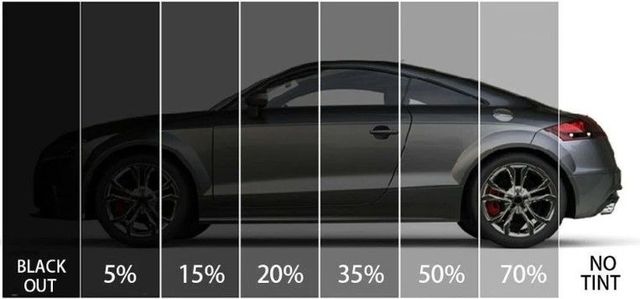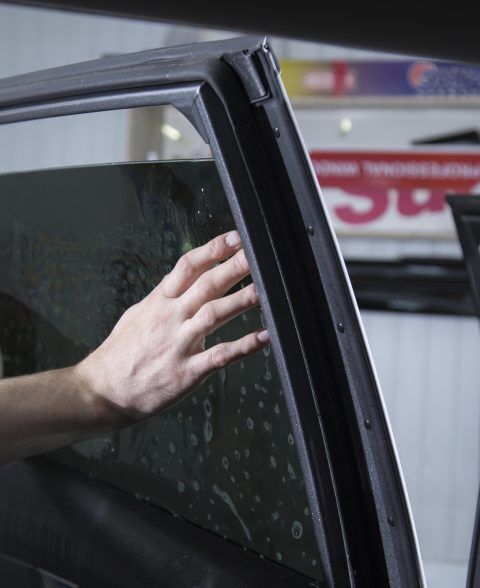Understanding the Different Sorts of window tinting Available for Cars
Understanding the Different Sorts of window tinting Available for Cars
Blog Article
Discovering the Different Kinds Of Window Tint for Cars and Their Benefits

Dyed Home Window Tint
Dyed home window tint is a prominent selection amongst cars and truck owners looking for to improve privacy and reduce glow while preserving an elegant appearance. This type of tint is created by incorporating dye into the sticky layer, which is after that put on the windows of the vehicle. The main charm of dyed window color lies in its ability to offer a cosmetically pleasing appearance without sacrificing capability.
One of the most significant advantages of dyed home window tint is its capability to block harmful UV rays, aiding to safeguard both guests and the car's interior from sunlight damage. Additionally, this color successfully decreases glow, adding to a much more comfortable driving experience, specifically throughout bright daytime problems. The strengthening of window color likewise includes a layer of privacy, making it extra tough for outsiders to see inside the automobile.
However, it is important to note that while colored window tint supplies many benefits, it may not offer as much warmth rejection as other kinds of colors. In addition, its longevity can be affected by direct exposure to prolonged sunshine, potentially leading to fading in time. On the whole, colored home window color stays a popular alternative for those focusing on visual appeals and fundamental sunlight security.
Metalized Window Color
Metalized home window tint represents an innovative choice for vehicle owners looking to enhance both efficiency and looks. This kind of tint incorporates little metallic bits that show sunshine, providing a series of advantages that interest several vehicle proprietors. Among the key advantages of metalized home window color is its exceptional heat being rejected abilities, which can significantly lower the interior temperature level of an automobile. This not just boosts comfort for travelers yet additionally minimizes the load on the vehicle's cooling system, potentially enhancing fuel performance.
Moreover, metalized tints offer raised durability contrasted to colored films, making them immune to fading and damaging. This long life makes certain that the tint maintains its performance and appearance gradually, providing lasting value.
Additionally, metalized window tint can improve personal privacy and security by making it harder for outsiders to see inside the automobile. The reflective high quality of the tint can likewise hinder potential theft, as prized possessions are much less visible (window tinting). While it may hinder some digital signals, such as general practitioner or cellular phone reception, the total advantages make metalized window tint a compelling selection for numerous cars and truck proprietors
Ceramic Window Tint
Providing advanced technology and unmatched efficiency, ceramic window color has become a top selection for critical vehicle owners. This cutting-edge movie is composed of innovative ceramic fragments that provide considerable warmth being rejected while maintaining clarity and visibility. Unlike typical colors, ceramic window color does not rely on steel or color, which can hinder electronic signals from tools such as general practitioner and cell phones.
One of the standout benefits of ceramic home window color is its remarkable UV protection. It blocks approximately 99% of dangerous ultraviolet rays, thereby shielding both the car's interior and its residents from sun damages. Additionally, this kind of tint improves personal privacy without compromising visibility, making it a practical option for everyday drivers and deluxe More Help vehicles alike.
Ceramic home window color additionally boasts sturdiness; it is resistant to fading and scratching, ensuring resilient efficiency. Additionally, its non-reflective nature implies it does not create glare, contributing to much safer driving problems. For those seeking a costs color service that combines aesthetics with performance, ceramic window tint attracts attention as a premium selection, supplying enhanced convenience and defense when driving
Carbon Window Tint
When it comes to home window tinting alternatives, carbon window tint has actually gained popularity for its mix of efficiency and cost. This kind of tint is made up of carbon fragments, which offer a distinctive matte finish that improves the aesthetic allure of vehicles. One of the primary advantages of carbon home window tint is its capability to block a considerable amount of damaging UV rays, safeguarding both the automobile's interior and its residents from skin damage and fading.
Furthermore, carbon window color offers outstanding warm denial residential or commercial properties, minimizing the requirement for extreme a/c and improving gas performance. Unlike colored colors, carbon tints do not discolor over time, maintaining their efficiency and look for many years. This resilience makes them a functional selection for auto proprietors looking for long-term worth.
Moreover, carbon home window tint is non-metalized, which means it does not interfere go to my site with digital signals, making it ideal for vehicles furnished with GPS, Bluetooth, and other wireless modern technologies. The equilibrium of cost, efficiency, and visual appeal has actually established carbon home window tint as a preferred selection for numerous automobile owners. Eventually, it functions as a reputable service for those looking to boost comfort while ensuring style.
Factory Color
Manufacturing facility color, also called OEM tint, describes the tinting that is put on car home windows throughout the production process. This kind of color is generally integrated right into the glass itself, offering an uniform appearance and constant degrees of shading throughout all windows. The primary function of factory color is to reduce glare and enhance passenger comfort while offering a degree of UV protection.

While factory tint offers basic advantages, it might not supply the exact same level of warm rejection or privacy as higher-grade aftermarket tints. Car proprietors seeking boosted efficiency may think about additional tinting options, while still valuing the visual allure and performance factory tint offers.
Conclusion

However, it is important to note that while dyed window tint offers various benefits, it might not provide as much heat rejection as various other kinds of tints. For those looking for a costs tint option that incorporates aesthetic appeals with capability, ceramic home window color stands out as a superior choice, delivering enhanced comfort and security on the road.
When it comes to home window tinting alternatives, carbon home window color has actually gained appeal for its blend of performance and affordability.Manufacturing facility tint, likewise recognized as OEM color, refers to the tinting that is used to car home windows throughout the This Site production procedure. The specific level of tint can differ depending on the automobile producer and design, with some cars including a lot more considerable tint on back home windows than on front windows.
Report this page